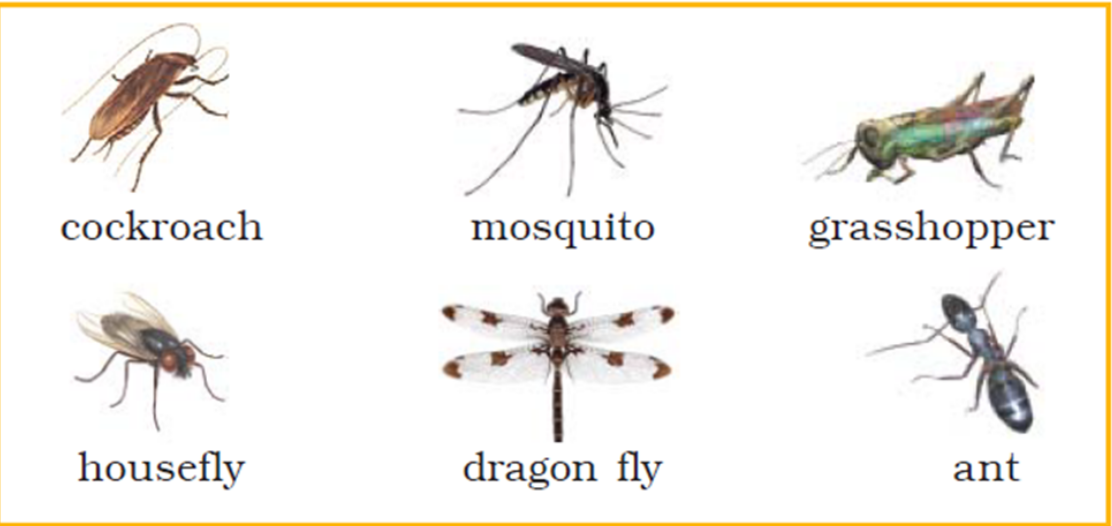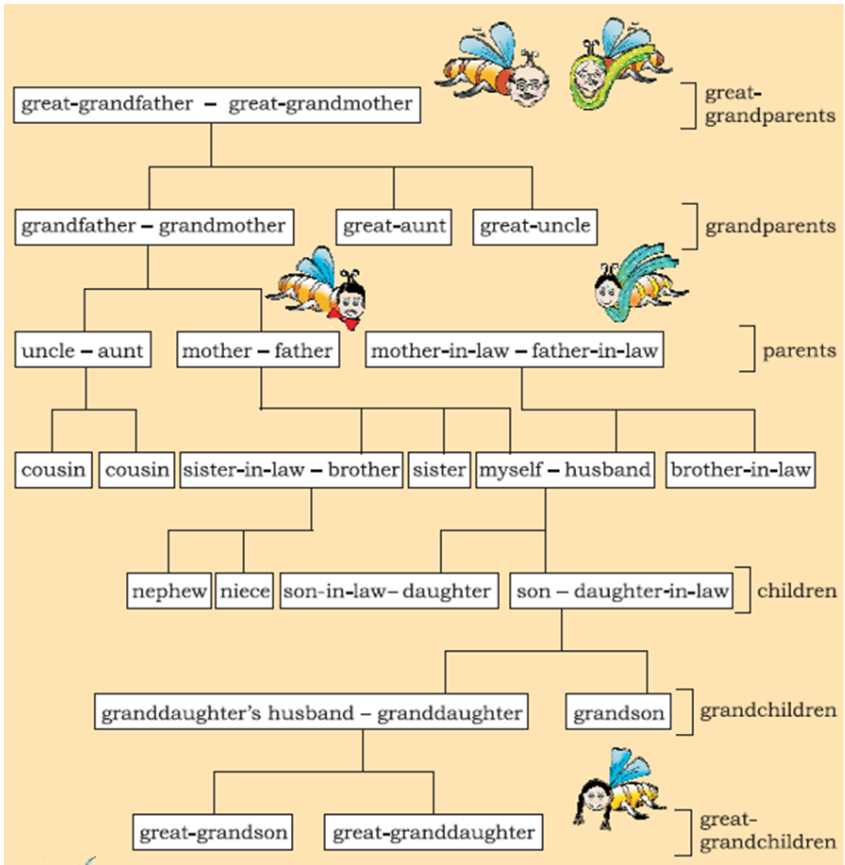
NCERT Solutions for Class 7 English Honeycomb Chapter 7
NCERT Solutions for Class 7 English Honeycomb Chapter 7: NCERT Solutions for Class 7 English Honeycomb Chapter 7, "The Invention of Vita-Wonk" covers every question in the textbook. Our team of experts has crafted these solutions to align with the standards set by the board. The chapter talks about the creation of Vita-Wonk by scientist Mr. Wonka. Initially, he developed Wonka-Vite, a formula that reverses ageing and makes individuals younger. The narrative follows a sequence of events leading up to Mr. Wonka's successful invention of Vita-Wonk.CBSE Board Exam Centre List 2024
NCERT Solutions for Class 7 English Honeycomb Chapter 7 The Invention of Vita-Wonk
NCERT Solutions for Class 7 English Honeycomb Chapter 7 The Invention of Vita-Wonk are given below in a simple but detailed way:Comprehension Check
Answer the following questions:Question 1. Choose the right answer.
(i) Mr Willy Wonka is
(a) a cook (b) an inventor (c) a manager.
Answer: (b) an inventor (ii) Wonka-Vite makes people (a) older (b) younger. Answer: younger (iii) Mr Wonka wants to invent a new thing which will make people (a) younger (b) older. Answer: (b) older Question 2 . Can anyone’s age be a minus number? What does “minus 87” mean? Answer: No, someone’s age cannot be a minus number. It is calculated from the day we are born. Minus 87 means that the person will have to wait for 87 years to take birth. Question 3: Mr Wonka begins by asking himself two questions. What are they?(i) What is _____________________?
(ii) What lives _____________________?
Answer: Mr Wonka begins by asking himself two questions. They are: (i) What is the oldest living thing in the world? (ii) What lives longer than anything else?Working with the text
Answer the following questions. Question 1 . (i) What trees does Mr Wonka mention? Which tree does he say lives the longest?(ii) How long does this tree live? Where can you find it?
Answer: (i) Mr Wonka mentions the following trees:- Douglas fir
- Oak
- Cedar
- Bristlecone pine
| CBSE Syllabus Class 7 | |
| CBSE Class 7 English Syllabus | CBSE Class 7 Math Syllabus |
| CBSE Class 7 Social Science Syllabus | CBSE Class 7 Science Syllabus |
Working with language
Question 1. What do you call these insects in your language? Add to this list the names of some insects common in your area.
Answer:
(Write the names of these insects as spoken in your language.)
Some other insects that are found commonly in our area are: bees, spiders, lizards, etc.
Question 2:
Fill in the blanks in the recipe given below with words from the box.
Add to this list the names of some insects common in your area.
Answer:
(Write the names of these insects as spoken in your language.)
Some other insects that are found commonly in our area are: bees, spiders, lizards, etc.
Question 2:
Fill in the blanks in the recipe given below with words from the box.
shred cooker times tomatoes half onion oil
Easy Palak–Dal
INGREDIENTS
- One ________
- One cup dal
- Two thin green chillies
- ________ a teaspoon red chilli powder
- Eight small bunches of palak
- Two ________
- Salt to taste
Wash and cut the vegetables; ________ the palak. Put everything in a pressure ________. Let the cooker whistle three ________, then switch it off. Fry a few cumin seeds in ________ and add to the palak–dal.
Answer:- One onion
- One cup dal
- Two thin green chillies
- Half a teaspoon red chilli powder
- Eight small bunches of palak
- Two tomatoes
- Salt to taste
 Answer:
Do it yourself.
Speaking
Question 1.
Using Do for Emphasis
Answer:
Do it yourself.
Speaking
Question 1.
Using Do for Emphasis
Charlie asks, “What happened?”
This is a way of asking the question “What happened?” with emphasis.
Given below are a few emphatic utterances. Say them to your partner. Let your partner repeat your utterance without the emphasis. Your partner may also add something to show she/he disagrees with you.
YOU: I did study. PARTNER: You studied? I don’t believe you. Look at your marks!YOU: I did go there.
PARTNER: You went there? Then…
YOU: I do play games.
PARTNER: …
YOU: He does read his books.
PARTNER: …
YOU: You do say the most unbelievable things!
PARTNER: …
YOU: The earth does spin around.
PARTNER: …
YOU: We all do want you to come with us.
PARTNER: …
YOU: Who knows how to cook?
PARTNER: …
YOU: I do believe that man is a thief.
PARTNER: …
Answer : YOU: I did go there. PARTNER: You went there? Then how was I unable to find you there? YOU: I do play games. PARTNER: You play games? Then why don’t you participate in them in school? YOU: He does read his books. PARTNER: He reads his books? But he is never able to answer the questions correctly. YOU: You do say the most unbelievable things! PARTNER: I say the most unbelievable things? Why do you feel so? YOU: The earth does spin around. PARTNER: The earth spins around? How can you be so sure? YOU: We all do want you to come with us. PARTNER: You want me to come with you? Then why didn't you guys call me earlier? YOU: Who knows how to cook? PARTNER: I do not. But I can't talk about my elder sister. I think she knows how to cook. YOU: I do believe that man is a thief. PARTNER: You believe that man is a thief? What makes you think so?Writing
Question 1. (i) Make a list of the trees Mr Wonka mentions. Where do these trees grow? Try to find out from an encyclopaedia. Write a short paragraph about two or three of these trees.(ii) Name some large trees commonly found in your area. Find out something about them (How old are they? Who planted them? Do birds eat their fruit?), and write two or three sentences about each one of them.
Answer : (i) Mr Wonka mentions the following trees:- Douglas fir
- Oak
- Cedar
- Bristlecone pine
- The age profile of a country’s population — does it have more young people than old people or vice versa? What are the consequences of this?
- How can we tell how old a tree, a horse, or a rock is?
- What is the ‘life expectancy’ of various living things and various populations (how long can they reasonably expect to live)?
NCERT Solutions for Class 7 English Honeycomb Chapter 7 Summary
The story "The Invention of Vita-Wonk" from NCERT Class 7 English Chapter 7, written by Roald Dahl, is quite fascinating. It's actually adapted from his novel "Charlie and the Great Glass Elevator". It begins with Mr. Willy Wonk, an inventor, creating Wonka Vita, a potion that reverses ageing. However, Wonka Vita's potency is such that it can cause people to vanish by making their age negative. One unfortunate individual becomes -87 years old, necessitating an 87-year wait before returning to life. In response to this mishap, Mr. Willy Wonk decides to counteract Wonka Vita's effects by inventing a drink that accelerates ageing. He embarks on a global journey in a great glass elevator to find the world's oldest living beings. He collects sap from a 4,000-year-old Bristlecone pine tree, a toenail clipping from a 168-year-old Russian farmer, the egg of a 200-year-old duck, and the tail of a 51-year-old horse. Additionally, he gathers whiskers from a 36-year-old cat, along with a flea living on the cat, a tail from a giant 270-year-old rat, and the black teeth of a 97-year-old Grimalkin. Finally, he procures knucklebones from a 700-year-old cat named Alou. He combines and boils these ingredients into a black liquid, which, when tested on a 20-year-old, rapidly ages them to 75 years old. Thus, Mr. Wonka successfully invents a potion to induce instant ageing.NCERT Solutions for Class 7 English Honeycomb Chapter 7 PDF
Benefits of NCERT Solutions for Class 7 English Honeycomb Chapter 7
NCERT Solutions for Class 7 English Honeycomb Chapter 7 provide numerous benefits for students studying English at this level. This chapter typically deals with prose lessons or stories that aim to enhance students' comprehension skills, vocabulary, and understanding of various literary elements. Here are some of the key benefits of using NCERT Solutions for Class 7 English Honeycomb Chapter 7:- Comprehensive Understanding : The solutions provided are meticulously crafted to ensure students grasp the essence of the text. They cover each aspect of the chapter, including summary, important points, explanations, and answers to questions. This aids students in developing a comprehensive understanding of the story or lesson.
- Improved Comprehension : NCERT Solutions help students comprehend the text better by providing detailed explanations for difficult words, phrases, and concepts. This clarity aids in enhancing reading comprehension skills, which are essential for academic success across subjects.
- Enhanced Vocabulary : Through the detailed explanations and contextual usage of words in the solutions, students can expand their vocabulary. They not only learn the meanings of new words but also understand how these words are used in different contexts, which is crucial for effective communication skills.
- Critical Thinking Skills : The questions and exercises included in the NCERT Solutions are designed to stimulate critical thinking among students. They are encouraged to analyse characters, themes, plot developments, and literary devices used in the chapter. This cultivates analytical skills and fosters a deeper appreciation for literature.
- Language Proficiency : By engaging with the NCERT Solutions, students improve their language proficiency in English. They learn correct grammar usage, sentence structures, punctuation rules, and other language conventions. This proficiency is invaluable not only for academic success but also for effective communication in everyday life.
- Exam Preparation : NCERT Solutions serve as excellent study material for exam preparation. The solutions cover all types of questions that may appear in exams, including multiple-choice questions, short answer questions, and long answer questions. By practising with these solutions, students become familiar with the exam pattern and gain confidence in their preparation.
- Self-assessment and Improvement : Students can use the solutions for self-assessment and improvement. After attempting the exercises and questions on their own, they can cross-check their answers with the solutions provided. This helps them identify areas of strengths and weaknesses, allowing them to focus their efforts on areas that need improvement.
- Accessibility and Convenience : NCERT Solutions are easily accessible to students either through textbooks, online platforms, or study materials. This accessibility ensures that students can study anytime, anywhere, according to their convenience. It also enables them to revisit concepts as many times as needed for better understanding.
- Support for Teachers : Teachers can also benefit from NCERT Solutions as they provide a structured framework for teaching the chapter. The solutions offer insights into how to approach different aspects of the text and provide valuable resources for classroom instruction.
NCERT Solutions for Class 7 English Honeycomb Chapter 7 FAQs
How should I use NCERT Solutions effectively?
Can NCERT Solutions be used for self-study?
Are NCERT Solutions available for all subjects and classes?
Are NCERT Solutions free?
Do NCERT Solutions cover all the questions in the textbook?








